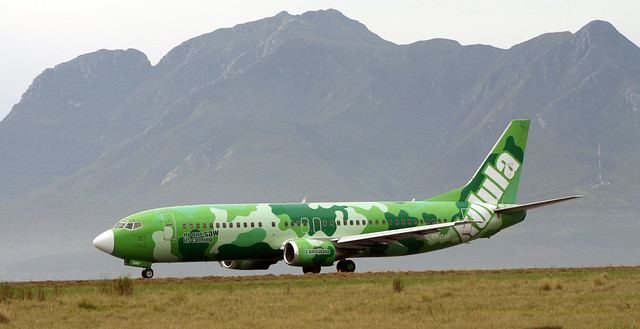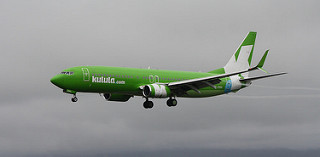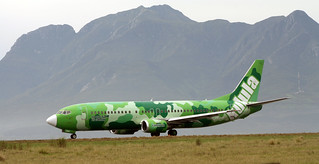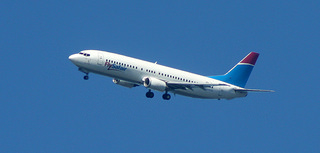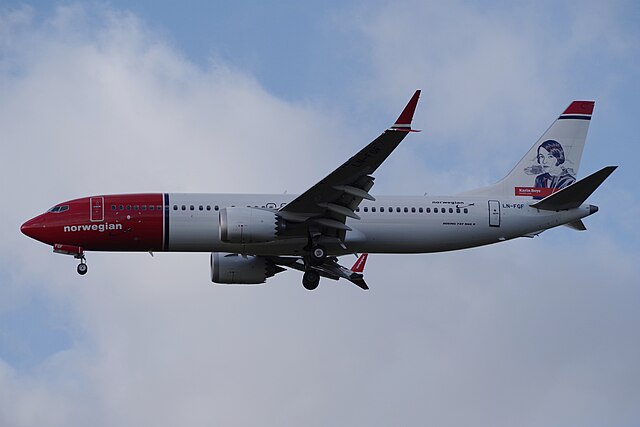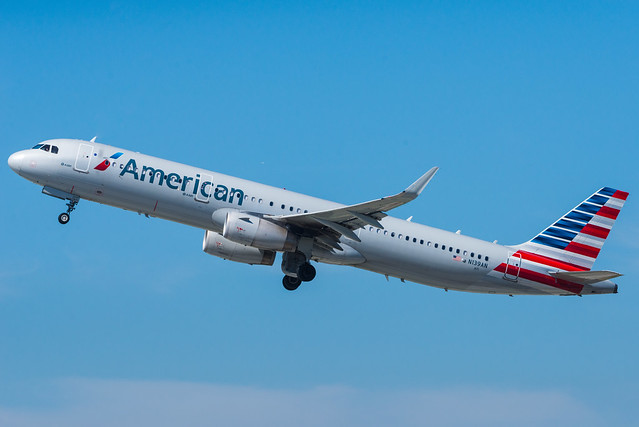Safair B734 at Johannesburg on Sep 16th 2019, multiple system failures on rotation for takeoff
Last Update: July 29, 2020 / 22:50:44 GMT/Zulu time
Incident Facts
Date of incident
Sep 16, 2019
Classification
Incident
Airline
Safair
Flight number
FA-202
Departure
Johannesburg, South Africa
Destination
Cape Town, South Africa
Aircraft Registration
ZS-JRM
Aircraft Type
Boeing 737-400
ICAO Type Designator
B734
South Africa's CAA (SACAA) reported a post flight inspection revealed the Generator Control Unit 2 had not been properly latched. The SACAA opened an investigation into the occurrence rated a serious incident.
A similiar occurrence had happened in the UK in 2018, see Report: West Atlantic B734 near East Midlands on Oct 12th 2018, electrical failures.
The SACAA released their final report concluding the probable cause of the incident was:
The investigation revealed that during rotation, the GCU of the No.1 engine had moved out of its rack, causing its electrical connectors to disconnect, resulting in multiple electrical system failures because of the broken lever latch of the GCU of the No.1 engine.
The SACAA reported the first officer (38, ATPL, 7,266 hours total, 137 hours on type) was pilot flying, the captain (50, ATPL, 17,673 hours total, 709 hours on type) was pilot monitoring.
The SACAA summarized the sequence of events:
During pre-flight, start-up, taxi and take-off roll, all systems operated normally. However, during rotation on Runway 03L, the master caution lights illuminated, showing multiple system failures. Also, the auto pilot (AP) 1 and 2 did not engage.
The crew retracted the landing gears and flaps before reading the after-take-off checklist. Thereafter, they advised air traffic control (ATC) that they were experiencing a problem and requested to maintain 8000 feet (ft), which the ATC approved. Shortly thereafter, the ATC offered a climb to flight level (FL) 110, which the crew accepted to clear low-level turbulence. To diagnose the problem, the crew consulted the Quick Reference Handbook (QRH) to follow and action its recommendations. The crew then checked all circuit breakers to see if they had popped, but they were all in order. They checked the auxiliary power unit (APU) generator and found that it was not latching onto the left alternating current (AC) bus. The crew’s diagnosis of the problem revealed that the number 1 engine generator failure and the transfer bus failure are the ones that had caused multiple system failures. The crew decided to use the systems still available to them to fly back to FAOR. The ATC cleared the aircraft for landing on Runway 03L. Emergency services were not dispatched as the crew felt that the aircraft was flying normally. The landing was uneventful until the landing roll when the captain’s flight instruments and communications 1 (COMM 1) failed. After shutdown, it was discovered that the lever latch of the generator control unit (GCU) of the No.1 engine was broken, and that the unit had moved out of its position.
The damage during the incident was only limited to the lever latch of the GCU of the No.1 engine; and none of the passengers were injured.
The SACAA analysed:
On 16 September 2019 during rotation, the aircraft experienced multiple electrical system failures because of the broken lever latch of the GCU of the No.1 engine. The electrical failures that occurred during rotation at FAOR were caused by the GCU of the No.1 engine moving out of its rack, disconnecting the electrical connectors. The disconnection of the GCU of the No. 1 engine resulted in the Gen 1; Gen Bus 1; Transfer Bus 1; 115V AC Electronic Bus 1; 28V DC Bus 1; and 28V DC Electronic Bus 1 becoming inoperative. Electrical System 2 would have still been powered by the right engine through Gen Bus 2.
The lever latch of the GCU of the No. 1 engine had developed a fatigue crack on its hook which was perpendicular to the loading direction, resulting in a shear lip before its final failure. The shear lip caused the unit to move out of its rack, resulting in electrical system 1 disconnection and multiple system failures controlled by the unit.
During multiple electrical system failures caused by the GCU of the No.1 engine moving out of its rack, the crew was still able to fly the aircraft back to FAOR without further incidents because the electrical system 2 was able to supply electrical power to the aircraft.
The GCU of the No.1 engine was fitted to the aircraft on 21 February 2019, seven months prior to the incident, and had accumulated 167 hours since its installation on the aircraft. There were no records of previous snags reported since the fitment of the GCU of the No. 1 engine to the aircraft.
It was not possible to determine when exactly did the latch lever hook failure occur as it had operated for 167 hours over a period of seven months. Also, there was no record of any maintenance work conducted around the area of the GCU of the No 1 engine post the maintenance carried out on 8 August 2019.
Incident Facts
Date of incident
Sep 16, 2019
Classification
Incident
Airline
Safair
Flight number
FA-202
Departure
Johannesburg, South Africa
Destination
Cape Town, South Africa
Aircraft Registration
ZS-JRM
Aircraft Type
Boeing 737-400
ICAO Type Designator
B734
This article is published under license from Avherald.com. © of text by Avherald.com.
Article source
You can read 2 more free articles without a subscription.
Subscribe now and continue reading without any limits!
Read unlimited articles and receive our daily update briefing. Gain better insights into what is happening in commercial aviation safety.
Send tip
Support AeroInside by sending a small tip amount.
Related articles
Flysafair B734 near Cape Town on Aug 20th 2019, loss of cabin pressure
A Flysafair Boeing 737-400, registration ZS-JRM performing flight FA-461 from Cape Town to Durban (South Africa), was climbing through FL300 out of…
Safair B734 and France B773 at Johannesburg on Oct 17th 2025, cleared to land on occupied runway
A Safair Boeing 737-400, registration ZS-OAF performing flight FA-249 from East London to Johannesburg (South Africa), was on an ILS approach to…
Safair B738 at Johannesburg on Apr 21st 2024, dropped wheel on departure
A Safair Boeing 737-800, registration ZS-FGE performing flight FA-212 from Johannesburg to Cape Town (South Africa) with 178 passengers and 6 crew,…
Safair B738 at Lanseria on Nov 21st 2024, bird strike
A Safair Boeing 737-800, registration ZS-ZWA performing flight FA-474 from Lanseria to Durban (South Africa), was climbing out of Lanseria's runway…
Safair B734 near George on Nov 22nd 2020, transponder failure and loss of cabin pressure
A Safair Boeing 737-400, registration ZS-OAF performing flight FA-134 from Cape Town to East London (South Africa) with 158 passengers and 6 crew,…
Safair B734 at East London on Apr 4th 2022, component out of limits
A Safair Boeing 737-400, registration ZS-JRE performing flight FA-143 from East London to Cape Town (South Africa), was climbing out of East London's…
Newest articles
Norwegian B38M at Malaga on Nov 22nd 2025, another aircraft on landing runway
A Norwegian Air Shuttle AOC Boeing 737-8 MAX, registration LN-FGF performing flight DY-1800 from Oslo (Norway) to Malaga,SP (Spain) with 189 people…
American A321 near Houston on Nov 23rd 2025, fumes on board
An American Airlines Airbus A321-200, registration N139AN performing flight AA-2118 from Orlando,FL to Phoenix,AZ (USA), was enroute at FL320 about…
Subscribe today
Are you researching aviation incidents? Get access to AeroInside Insights, unlimited read access and receive the daily newsletter.
Pick your plan and subscribePartner

ELITE Simulation Solutions is a leading global provider of Flight Simulation Training Devices, IFR training software as well as flight controls and related services. Find out more.
SafetyScan Pro provides streamlined access to thousands of aviation accident reports. Tailored for your safety management efforts. Book your demo today
AeroInside Blog
Popular aircraft
Airbus A320Boeing 737-800
Boeing 737-800 MAX
Popular airlines
American AirlinesUnited
Delta
Air Canada
Lufthansa
British Airways
